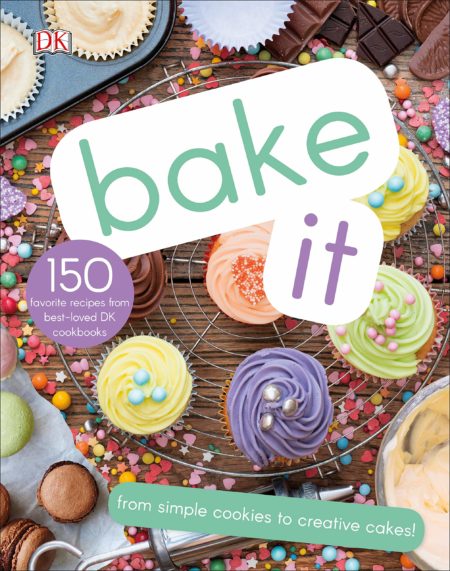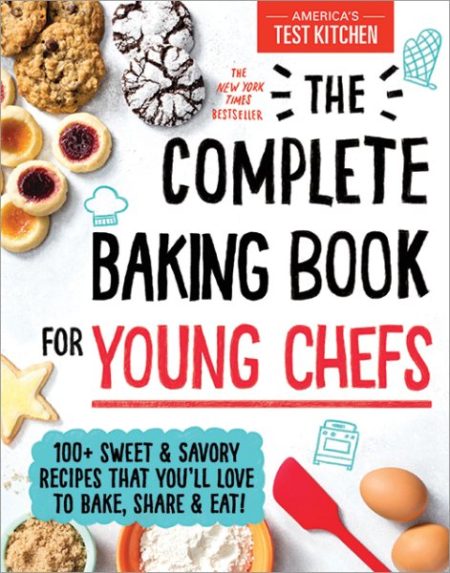Have you ever smelled something and had it bring you immediately back to a specific time or place? Or had it evoke a strong memory? Whenever I smell roasted nuts, it brings me back to the winter of 1995, when I was a college student living in Madrid, Spain. There was a man around the corner from our apartment who roasted chestnuts (and sometimes other nuts) over a fire in a big barrel on the sidewalk. I walked by him several times every day, so that smell is firmly imprinted in my memory. If I smell any type of roasting nuts now, all I have to do is close my eyes, and I feel like I’m back standing on the corner of Calle de Cea Bermúdez and Calle de Guzmán el Bueno. I hear the traffic, see the people bustling in the streets and the vivid colors of the tall buildings, and smell the chestnuts mixed with the car exhaust.
Unfortunately, smells can evoke negative memories as well. Most people I know love the scent of vanilla and say it reminds them of baking. However, when I had my wisdom teeth removed in college, they used a vanilla-scented mask. Now, over 25 years later, smelling vanilla-scented items still creates a physical reaction in my body as I remember the negative experience I had at the dentist.
As you can see, the sense of smell is very powerful. It is important to alert us if something is wrong in our environment (smelling smoke indicating a fire, smelling gas, or smelling rotten food before you accidentally take a bite). Odors go straight to the limbic system, which are the brain structures that relate to emotions and memory. This is one reason that stores will pump smells into the aisles or why realtors will recommend that you bake cookies right before you have someone coming to see your house for sale. They hope to evoke happy memories to get you to feel more comfortable and hopefully spend more money!
When it comes to sensory activities, I believe that smell is one of the last senses people typically think about. So this month, I thought it would be fun to show you how to paint with spices! I had a lot of fun experimenting with this, and I’m excited to share the results with you!
Supplies needed:
- Paint
- Variety of herbs and spices (I used cinnamon, turmeric, ginger, sage, nutmeg, and instant coffee)
- Small bowls
- Popsicle stick
- Paintbrush
- Paper
- Food coloring (optional)
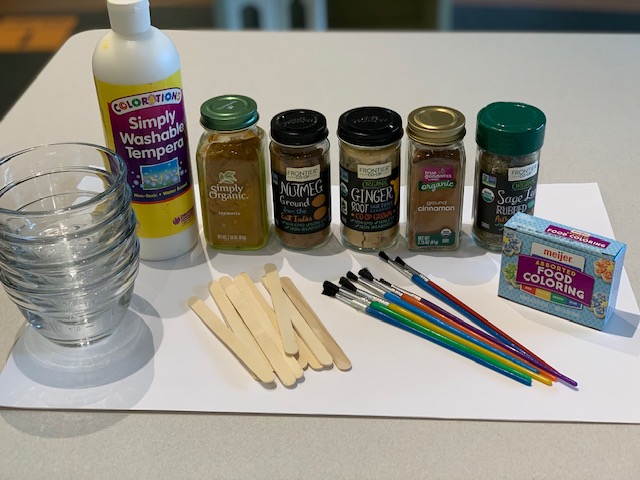
You have two options when it comes to the paint. As you probably know, paint typically has a very strong smell just on its own. This could potentially get in the way during this activity, so you can make your own paint if desired. I did this by mixing 4 tablespoons of flour with 4 tablespoons of cornstarch, then adding water. The recipe I found said to use one cup of water. I did not use anywhere near that amount. In fact, I felt like even with using less water than was recommended, my paint was too runny. So use your judgment and add little by little until you get the consistency you like. As you can see from this picture, the store-bought white paint on the right is more of a pure white, where the homemade mixture looks a little “dirty.”
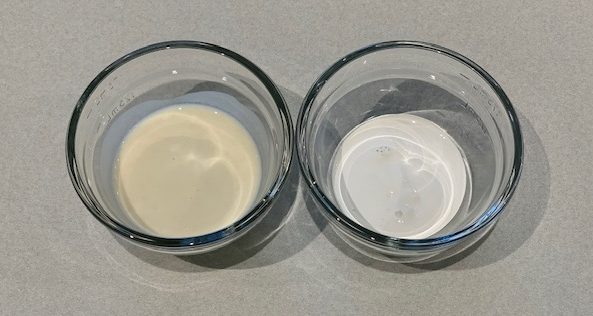
I had three cups of white paint and three cups of the homemade paint. I added cinnamon, turmeric and ginger to the white paint and sage, nutmeg and instant coffee to the homemade paint. It took a LOT of stirring to get the spices really mixed in. I used at least one tablespoon of each spice in each bowl. One interesting thing I found was that the real paint got much thicker and goopier once I added the spices. You can kind of see that in the picture with the cinnamon. The spices will not completely dissolve into the paint, but it will give some color to it.
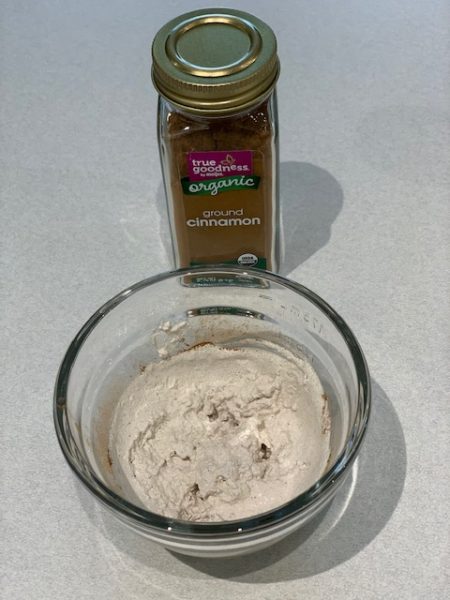
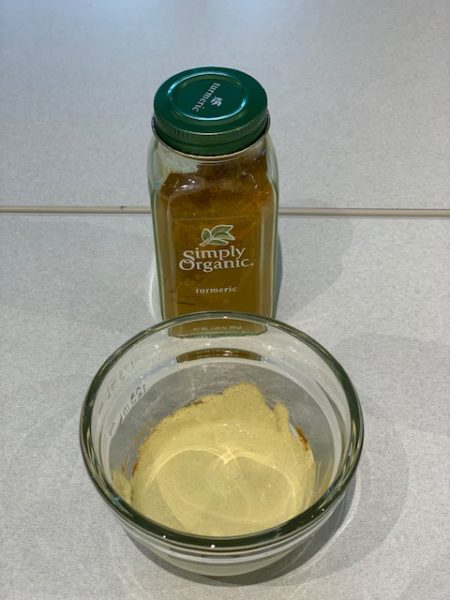
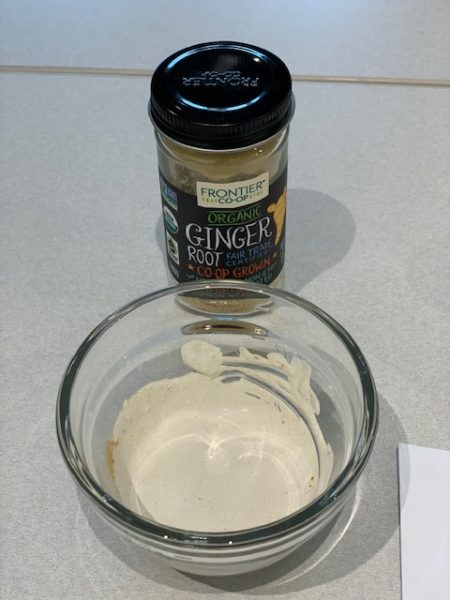
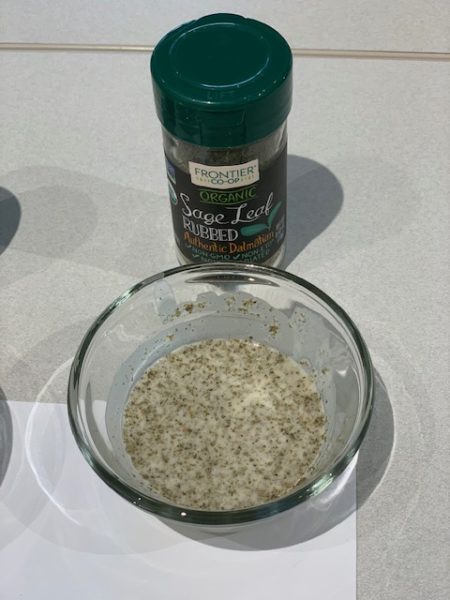
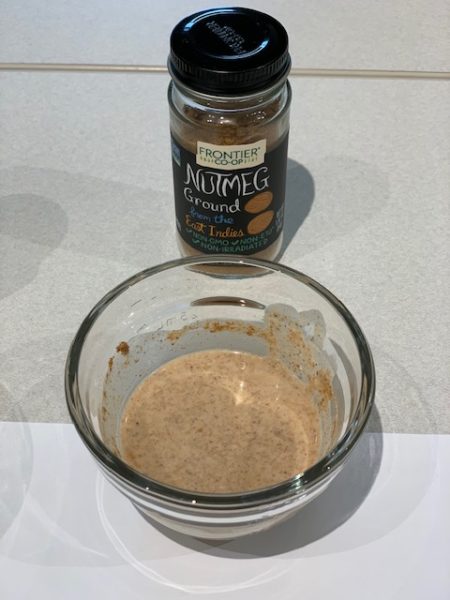
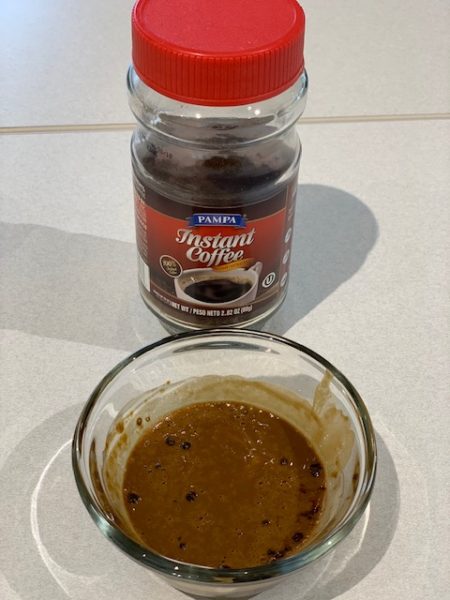
As you can see, the colors are not super vivid—I kind of like the natural look of them. The more spices you add, the more color you will get, and the stronger the scent will be as well. Here is what it looks like when you paint! The store-bought paint with spices was very smooth painting. The three on the right were the homemade paints, and they were definitely more watery. Since the spices don’t dissolve in the paint, you end up with the paint base and flecks of the spices throughout. Once it dries, you will have a nice texture to your painting.
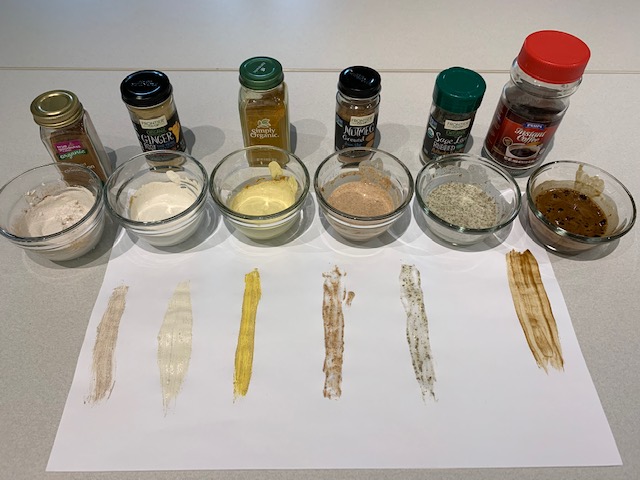
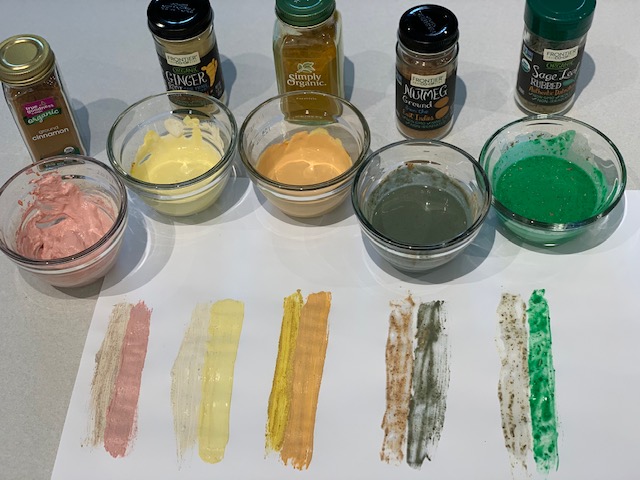
Just for fun, I thought I would add some food coloring to the mixtures. That definitely made a difference in helping the paint stand out. I tried to pick colors that would make sense based on the spice. So I added red to the cinnamon, yellow to the ginger, orange to turmeric, and green to the sage. I tried to make the nutmeg paint more brown by adding a combination of red, green, and yellow. But, well, all you have to do is take one look at the picture, and you can see how well that worked. I painted with the new paints next to the un-colored paint to show the difference.
Now that you have your paint mixed, you can use it to create pictures, or just have fun with it and spread it around the paper to make process art. As I shared in October’s post about Rubber Band Painting, process art is all about the experience and process of creating art and not about the final product. I really enjoyed painting with this spice paint. The combination of cinnamon, ginger and nutmeg brought back memories of baking and spending the holidays with my family.
What senses are active with this activity?
- Olfactory: That’s a fancy term for smell. If you use paint, you will definitely smell the paint, but if you add enough of the spices, that can for sure overpower the paint smell. What happens if you mix two or more paints together? What memories does the scent of the spices bring up for you?
- Visual: You can see the different colors as you mix spices. Adding food coloring will make the colors more vibrant.
- Tactile: If you’re brave, go ahead and use your fingers to paint. Otherwise, wait until the paint dries, and you can feel the difference in the spices as you rub your fingers over them.
Cooking is another great way to incorporate smells into your activities. Who doesn’t love the aroma of freshly baked bread or chocolate chip cookies? We have a lot of great cookbooks that are perfect for children to be more active in the kitchen.
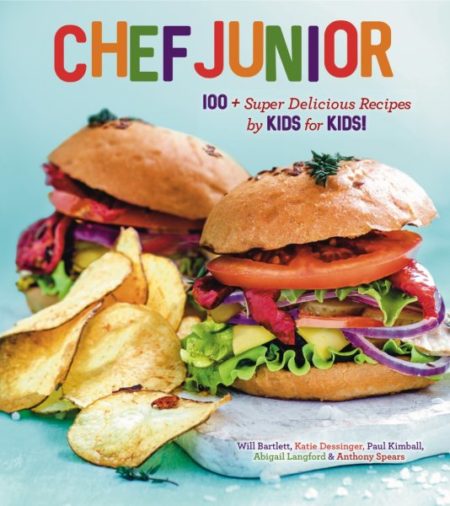
Chef Junior: 100 Super Delicious Recipes by Kids for Kids
Will Bartlett, Katie Dessinger, Paul Kimball, Abigail Langford and Anthony Spears
So when you are planning activities for your children, don’t forget their noses! You will not only be helping provide a sensory experience in the moment but will be helping to create memories of the time you spent together that will be attached to those smells for years to come.

